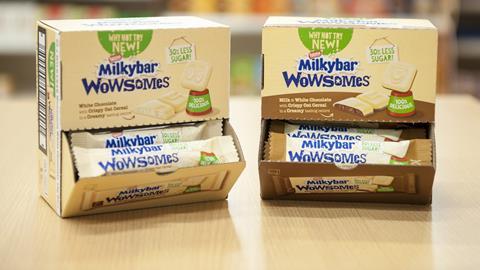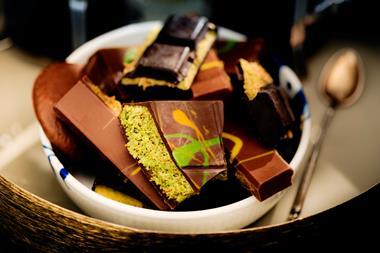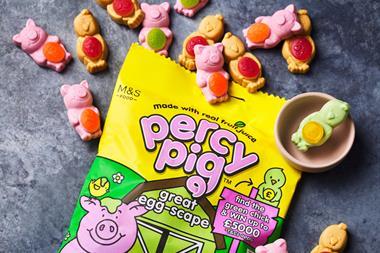Did Wowsomes get it all wrong? Or is there just no appetite for it?
The decision to axe its Wowsomes brand will have left a sour taste at Nestlé HQ. The Swiss giant poured huge resources into developing a sugar reduction technology it claimed would enable consumers to perceive the same level of sweetness while consuming 30% less of the white stuff. “The ambition behind Milkybar Wowsomes [is] enormous,” said Jas Scott de Martinville, global lead for Nestlé Confectionery Research & Development director, at the time of its launch.
Less than two years on, the brand is toast. Is the failure of Wowsomes a sign that no-or-low-sugar chocolate will never find a market in the UK? Or can competitors succeed where Nestlé has so far failed?
It is widely eaten in countries such as Germany and Spain, but Raw Halo co-founder Jonathan Chapman suggests low-sugar chocolate is still viewed with suspicion by the British public. “Our research indicates consumers can be hesitant to try lower-sugar, or artificially sweetened confectionery due to unrecognisable ingredients, and an increased use of sugar substitutes,” he says.
Mintel research backs this up, with 68% of UK adults saying they would rather have a small portion of regular chocolate than a larger amount of low-sugar chocolate. “The history of earlier low-sugar offerings has made the segment unattractive,” says Mintel analyst Marcia Mogelonsky. “These products did not deliver on taste or mouthfeel and were associated with medical need.”
Nestlé has admitted that Wowsomes didn’t meet expectations on taste. Yet others believe the execution of the launch was to blame. “The problem is not the product, it is marketing timidity,” says Jack Winkler, emeritus professor of nutrition policy at London Metropolitan University. He believes major confectionery players like Nestlé are worried about healthier products impacting the performance of their established brands and therefore fail to back them with the marketing spend needed to achieve widespread distribution and trial. “If a product is not gaining distribution it is not going to be an answer to the public health problem,” Winkler adds.
Hitting targets
Chocolate makers have come under pressure to develop low-sugar variants as a way of meeting government reformulation targets. But Holly Gabriel, registered nutritionist at Action on Sugar, questions whether making consumers choose between regular sugar and low-sugar products is the correct approach. “Had Nestlé used this technology to reduce sugar in its core lines in small increments over time, and without making claims on-pack, this would have undoubtedly improved consumer acceptance and reduced sugar intake on a population level,” she says.
Undeterred, and perhaps mindful of upsetting consumers by messing with classic recipes, both Mondelez and Mars have followed Nestlé’s lead by creating new, healthier variants of their bestselling countlines.
Mondelez says consumer reaction to Cadbury Dairy Milk 30% Less Sugar has been “overwhelmingly positive” since its launch in July 2019. Like Nestlé, Mondelez has a lot riding on its low-sugar innovation, having spent three years developing the formulation to ensure it aligns with consumer tastes. In a sign of its determination to make the product a success, Mondelez is soon to launch a new ATL push including in-store support.
Mars, meanwhile, says distribution of Mars and Snickers Protein - which contain 40% and 30% less sugar respectively than the regular variants - is in line with expectations. “We are planning future launches and we expect the range to grow over time,” adds a spokeswoman.
Nestlé’s latest foray into the low-sugar market suggests it has reflected on the approach of its rivals. When the company launched its More protein range in August, on-pack messaging focused on the protein the Kit Kat and Yorkie variants contained, rather than the 30% sugar that had been removed.
With chocolate manufacturers miles away from reaching the government’s 2020 sugar reduction targets, Nestlé won’t be alone in hoping the failure of Wowsomes is part of a learning curve rather than the end of the line for low-sugar chocolate.




















1 Readers' comment